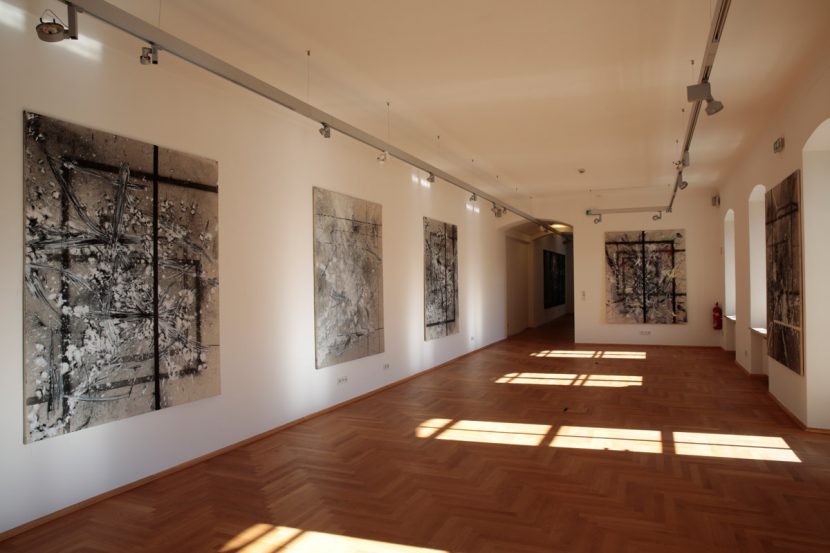Exhibition Gerberhaus – Michi Lukas
What is left if you take Francis Bacon’s bodies out of the painting? Where are the forces he indirectly depicts through the crushing, withstanding but somewhat obeying bodies? These forces are revealed by the distortion of the flesh that is suffering the pressure, they are shaping the mass they have met by chance. Michael Lukas’ paintings have this eerie quality: forces seem to lurk in them, just waiting for a body to appear. To, by chance, get lost into the space Lukas painted. Lost is the proper term, for the entire construct becomes twisted in Lukas’ hands. Logical principles obviously have been applied, but what is the front… and the back within this utterly confusing space?
His repertoire is quite broad, taking us from Bacon’s emptied, contorted spaces to Mondrianesque squares devoid of their colour to what seem to be the remnants of Andy Warhol’s flowers, as if Warhol’s removal from immediacy has been taken to an extreme. The flowers are layered over a grid, which appears repeatedly in Lukas’ works.
The grid, a form we are surrounded by extensively in our everyday lives, served artists from the modern period up to now as the perfect vehicle into a semiotic and narrative void. Lukas welcomes this blank zone and let’s intuition guide him while the work crystallises.
He often uses found material detected at the buildings he is having his studio at that particular moment in. Currently, in December 2015, he is working in a former office space where he found the carpet, for example, to be fit for a substratum, which he painted on with priming colour he found right there as well. The environment he is working in is always a major influence, he states. Using parts of the carpet series as an installation on the floor at the exhibition, he transports the ghost of this former office located in Vienna.
Applying rabbit-skin glue as foundation, masking sections with duct tape, dusting pigment particles over the surface, using oil paint and primer white as well as crayons makes for an intriguing medley of surprising and original materials. The mix of print, drawing and painting reveals the mechanical elements in Lukas’ approach. In combination with automatism, reminiscent of the techniques employed by Surrealists as well as artists such as Jackson Pollock – letting us trace Lukas’ spontaneous bodily movements and tune in to his emotional outbursts – his works become a stage buzzing with seeming contradictions he appears to merge effortlessly. Significant is that even those works of his that are rather not as crammed as some still have their entire surface covered, from corner to corner.
Apparently, his ever-changing interests unfold as a journey across modernism and post-modernism, bridging different movements with ease.
Text by Sandra Petrasevic







